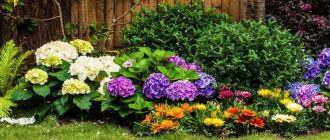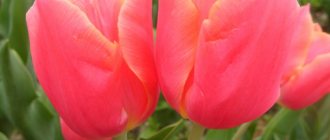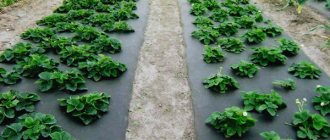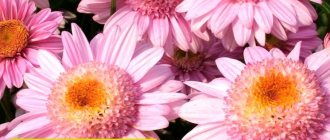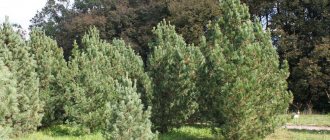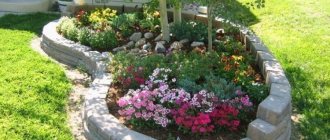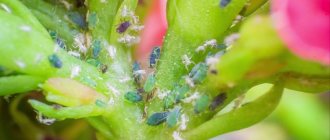What plants are combined with thujas in landscape design?
The frequent use of thuja in landscape design is easily explained. Thuja is very decorative and goes well with many other plants, and is also easy to care for, like all conifers.
Of course, the best neighbor for a thuja will be a thuja of another species. In many cases, it doesn’t matter at all what species will grow nearby; they all get along well together. The main thing is that there is enough free space between the bushes and that they have enough sunlight. This combination will delight you with its bright green color even in winter.
Thuja occidentalis is most often used in design. It tolerates shade well, is not afraid of frost, haircuts, and has beautiful, bright needles. In design, it looks great in the company of related plants.
This combination, like thuja with other conifers, is used quite often and can be found everywhere. The great advantage of this combination is that, regardless of the changing seasons, it does not lose its beauty.
When choosing plants, you need to focus on the soil, or more precisely on its acidity, which should be suitable for all crops. You need to choose plants that grow in approximately the same conditions. Otherwise, very high or, conversely, too low soil acidity will negatively affect them. Their development will be poor.
Juniper is perfect as a neighbor for thuja. It is advisable to choose low varieties that contrast in color with the thuja. In addition to juniper, thujas are planted next to spruce and fir trees.
Thuja looks no less impressive in a composition with deciduous plants, which emphasize the decorative nature of the thuja. Such compositions look richer and give designers more room for imagination.
But you need to be careful when combining coniferous and deciduous plants. It is very easy to make mistakes when choosing colors and style. Do not forget that not every plant gets along with thuja. Therefore, before choosing a crop, you need to carefully study all its biological features and the nuances of cultivation. And having learned whether it will be a good neighbor for the thuja, plant it.
Reasons for plant incompatibility
The compatibility of plants on a site is an important factor when organizing plantings, especially if we are talking about a small area where different crops will be in close proximity. The main reasons for incompatibility are special requirements for the soil (in particular, its acidity), lighting, site humidity, as well as susceptibility to the same diseases and pest attacks.
Also dangerous is the joint planting of crops with powerful root systems, which over time will intertwine in the soil and inhibit each other’s development. Therefore, it is important to choose the right companions; for example, it is better to plant fruit trees with herbaceous plants and flowers.
Video: How to use coniferous plants in landscape design
How you can use thujas in the landscape design of your summer cottage and more
There are practically no design solutions into which thuja would not fit organically. Designers use it to create a wide variety of compositions. Thuja can be the central element of a composition, or it can serve as a background for it.
With the help of thuja, you can create an original design for the entrance area; you can make it in the form of an alley. Such an original design will be appropriate on any site, even if it is small. The varieties of thuja with a pyramidal crown that grow tall are most suitable for this.
Such varieties are Brabant, Columna, Pyramidalis, Aurescence and others. Brabant is a fast-growing variety of thuja that can reach a height of 20 meters. The needles of this variety are dark green. Aurescence can also boast of rapid growth, but its height is much smaller. It is only 2.5 meters. The color of the needles is golden green.
Thuja is used not only in the design of residential areas. It is also often used in urban development. It is usually used to decorate pedestrian paths, planting it along the edges. The area near non-residential buildings is also often beautified by planting thuja. It decorates the territories of educational institutions, cafes, shops, offices.
Many people prefer to divide the territory into functional zones. Or mark the territory of your site with a hedge. Thuja is ideal for its creation. A hedge can be created not only from low-growing varieties of thuja. Higher varieties are also suitable for this. The choice of plants depends on what goal the designer wants to achieve. Among the low-growing varieties, Khoveya and Danica are popular. Among the higher ones are Cristata, Wagner.
In order to visually highlight the outlines of garden paths, you can create a border from thuja. Small thujas with a ball-shaped crown are best suited for this purpose. Such varieties are Danica and Teddy Reingold. Their borders turn out neat and beautiful.
Thuja looks great in company with ornamental shrubs, perennial flowers, and various trees. Such compositions can arouse admiration and great interest. In order to make them, you need to have excellent taste. And also know the characteristics of many plants in order to correctly combine them with each other.
Types and varieties
Let's consider which varieties of western thuja are cultivated in the temperate climate of central Russia.
Aurea - with yellow needles, in the shade it acquires green shades, which become darker in winter. It has thick needles, lends itself well to shaping, can be given any shape, due to its low growth (up to 2.5 meters) it can be used in compositions with conifers of other colors in the middle ground or with roses, hydrangeas, ferns in the background. Thanks to its yellow color, it can be included as an accent in hedges of darker varieties. Looks beautiful with purple Thunberg barberry. This variety has originally arranged branches, which further enhances its decorative qualities. The annual growth is only 5 centimeters. This must be taken into account when purchasing a variety for your site.
- Thuja Yellow Ribbon also has yellow colored young needles, is well trimmed, and grows relatively slowly - 10 centimeters per year. Very winter-hardy. The crown is narrow cone-shaped.
- Thuja Mickey has similar characteristics, only its foliage is dark green and shiny.
- Albospicata reaches a height of 2.5 meters, the needles are the silver color of wormwood with white tips, which creates an additional play of light. This effect looks very beautiful in hedges. The crown of albospicata is very wide and occupies about a meter in diameter, this necessitates the need for additional space in the composition. Can be used as a separate decorative tree.
- Thuja Brabant has similar characteristics, but it is less winter-hardy and has a lighter crown, and has rapid growth (up to 50 centimeters per year).
- Globoza. An adult thuja does not need pruning; it has dense, bright green, spherical needles up to 1 meter high and wide. Looks good both when planted alone and in combination with creeping junipers. Very loved by designers for its neat round shape. It is often the main accent in floral arrangements.
- Thuja Reingold. It has unusual golden-bronze needles that turn pink in spring. It will be an excellent decoration for a rock garden or flower bed. An adult plant is 1 meter high and quite winter-hardy.
- Thuja Danika, low - up to 0.7 meters, with a round, dense crown of rich green color. Very good in alpine slides or in outdoor pots on an open terrace, as a border to a coniferous composition.
- Thuja Woodwardy is similar. It has a low, compact, round shape and contrasting foliage color, from light to dark, which makes it decorative.
- Thuja Hoseri is a dwarf variety, has light green foliage, a ball-shaped crown, about 70 centimeters high. It is interesting because the color of the needles changes throughout the year from light green to bronze.
- Filiformis. This thuja is completely different in structure of the crown and branches from the previous specimens; it is more like a fountain. It harmonizes with creeping conifers and can be used as a tapeworm.
- The same fountain-shaped crown of thuja foldata is Vipcord. She grows very slowly, with a maximum height of 1 meter. An adult thuja is given an original standard shape.
- Holmstrup is an elegant columnar thuja, with dense, beautiful noble silver needles on twisted fan-shaped dense branches. It makes a majestic impression. Reaches a height of 4 meters. Used to form alleys and hedges.
- Thuja Columna is a tall, up to 10 meters in height, coniferous plant with a narrow columnar shape, with dense dark green needles. The growth per year is 15-30 centimeters. Very unpretentious to the composition of air and soil. Long-lived.
Thuja and hydrangea in landscape design
The best neighbor of the thuja in landscape design is the hydrangea. Hydrangea is a perennial shrub or tree. The most popular varieties of hydrangea are paniculate hydrangea and tree hydrangea. The height of hydrangea varies from one and a half to ten meters.
Many gardeners are delighted with hydrangea because of its large number of huge, incredibly beautiful flowers. Huge hydrangea inflorescences attract the attention of even people who are completely indifferent to floriculture. Hydrangea is incredibly beautiful.
Hydrangea has a long flowering period. It lasts from the last days of spring until late autumn. Paniculate hydrangea goes especially well with thuja. Its large inflorescences of white, blue, greenish, pink colors will add a bright note to the composition with thujas.
The combination of brightly colored hydrangeas with tall, columnar arborvitae allows you to be transported to a Mediterranean garden. Hydrangeas look great against the backdrop of dark green thujas.
This proximity benefits the plants. Thujas release phytoncides into the environment that can protect hydrangeas from many diseases. Also, when a thuja grows nearby, the hydrangea is less likely to be attacked by pests. When planting hydrangea next to a thuja, it is important that the hydrangea has enough space to grow and develop. She needs approximately 2-2.5 meters of space.
In order not to wait for the hydrangea to grow and begin to bloom, you need to buy seedlings that are at least 3 years old.
Ideas for beautiful landscaping
Regardless of the style of garden design, there is a place for thuja. There are many options for placing ephedra. Perennial plants that remain decorative throughout the year will decorate the front area. With their use, the rockery will take on a more refined look: it will become the calling card of the owners of a dacha or country house.
Fast-growing varieties are used to form a hedge that closes a cozy yard from prying eyes and creates a special microclimate. Thujas of various types look beautiful in an ensemble with long-flowering crops and decorative foliage. Some varieties of barberry do not shed their leaves - they will be an excellent addition to a coniferous composition, where there are also junipers or dwarf forms of spruce.
Bright conifers, when planted and cared for correctly, allow you to create a unique landscape on your site. Along with the beauty they provide all year round, thujas purify the air and saturate it with oxygen.
Thuja with trees and shrubs
Thuja goes well with many shrubs. Good neighbors for it will be: hibiscus, bladderwort, weigela, barberry, magnolia, Kuril tea (cinquefoil), euonymus.
When choosing them, the main thing is to take into account the characteristics of the root system. Thuja has a superficial root system. This means that its neighbors must have roots that go deep into the ground. If you plant another shrub with a shallow root system near the thuja, they will begin to compete for nutrients. As a result, either both plants will develop poorly and slowly, or one of them will choke out the other.
Boxwood will look great next to the thuja. Just like thuja, it tolerates pruning well, so their crowns can be shaped in different ways. The combination of these plants with formed crowns looks very impressive.
The areas between the thujas can be planted with small shrubs and ground cover plants. Thyme, Erica, and saxifrage are suitable for this.
You should not plant thuja next to birch trees or bird cherry trees. Thuja will negatively affect their development. Fruit trees will also not be happy with such a neighborhood. The phytoncides secreted by thuja are destructive for them. If you plant thuja in the same area as fruit trees, the distance between them should be at least 6 meters.
A composition of thujas and roses will look great. The most suitable for such compositions are thujas with a spherical crown and compact-sized thujas. At first glance, it may seem that these plants are not the best companions, but they can be planted together. The main thing is to maintain sufficient distance between thujas and roses. It should be about 1.5-2 meters. If this distance is maintained, plants will not take nutrients from each other.
Compatibility of fruit and berry crops
| Name of culture | Good compatibility | Competitors | Reasons and protection measures |
| Apricot | Peach, cherry, cherry, pear, apple, walnut. | Competitor for lighting, common diseases. Walnut is a natural herbicide against competitors. Distance 4-7 m from the competitor. | |
| Pear | Hawthorn, pine, larch, tomatoes, calendula, dill. | Cherry, sweet cherry, peach, rowan, walnut. | Sick all the time. Same diseases. Peach and pear oppress each other. A common pest is the rowan moth. Drug treatments. |
| Peach | Cherry, cherry, pear, apple, apricot. | They oppress each other. The peach dies completely after 4-5 years. The optimal distance between competitors is 6-7 m. | |
| Apple tree | Pine, larch, tomatoes, calendula, dill. | Apricot, cherry, sweet cherry, poplar, peach, rowan. | Extreme degree of competition for light and water. Poplar suffers from the release of ethereal vapors. A common pest is the rowan moth. |
| Plum | Red and black currants, birch. | They oppress each other. | |
| Red rowan | Cherry. | The branches of red rowan are exposed on the cherry side. | |
| Red currants | Onion. | Plum, cherry, sweet cherry, pine, birch, raspberry, gooseberry. | They oppress each other. Onions protect against bud mites. Treatment with drugs. |
| Black currant | Honeysuckle. | red currants, raspberries, gooseberries. | They oppress each other. A common pest is the gooseberry moth. Treatment with drugs. |
| Gooseberry | Red and black currants, raspberries. | A common pest is the gooseberry moth. Treatment with drugs. | |
| Cherry | All fruit, red and black currants. | All fruit crops that grow under the crown are suppressed by cherries and die. | |
| Walnut | Medicinal herbs. According to some reports - dogwood, sea buckthorn, | All fruit trees, especially apple trees. | The leaves contain juglone (a plant herbicide). Washed out of the leaves into the soil, it destroys any vegetation under the crown, especially the apple tree. |
| Raspberries | Strawberries. | A common pest is the raspberry-strawberry weevil. Treatment with drugs. | |
| Irga | All types of nuts, lilac, viburnum, barberry, mock orange. | Maintain spatial isolation. | |
| Sea buckthorn | Oregano, chamomile. | Raspberries, black currants, strawberries, all nightshade crops. | Aggressive antagonist. It clogs the growth of neighbors with shoots. It is better to plant in mono plantings. |
| Barberry | Inhibits the growth of other crops. It is better to plant in mono plantings. | ||
| Fir, viburnum, rose, lilac, rose hip, mock orange | Inhibits the growth of other crops. It is better to plant in mono plantings. |
Arborvitae in landscape design in combination with perennial flowers
Thuja's companions can also be annual and perennial flowers. You can plant lavender, hosta, alyssum, lobelia, violas, irises, petunias, delphinium, and periwinkle next to it. Bulbous plants get along well next to the thuja. Such proximity does not affect them in any way, so you can safely plant lilies and tulips next to the thuja.
You should not plant peonies, dahlias or asters next to the thuja. They are not the most suitable companions for thuja. Also, you should not choose flowers that quickly finish blooming as companions for thuja. And also inconspicuous, inexpressive plants. This combination will look untidy.
Next to the thuja you need to plant decorative, bright, long-blooming plants. They should either stand out as a bright spot against the background of tall thujas or set off small, neat thuja bushes. If the thuja is planted in front of perennials, then you need to choose perennials that will not get lost next to it and will not lose their decorative effect after flowering ends.
It could be Volzhanka, delphinium. If the thuja is in the background, then periwinkle, armeria, and arabis can be planted in front of it.
You can plant semi-wild cereal plants nearby. These can be feather grass, oatmeal, and pinnate bristle grass.
Helpful information
When forming a composition of thuja mix, low-growing dwarf shrubs should be in the foreground. Medium-sized and tall plants are placed closer to the center. Preference is given to slow-growing shrubs of medium height.
Thuja is undemanding to soil and care and tolerates planting well, but it is better not to disturb an adapted plant with unnecessary transplants. Therefore, when planting a garden, you should think in advance about its growing location, taking into account all the characteristics of an evergreen tree.
Nowadays there is practically nowhere without conifers. Thanks to their diversity and unpretentiousness, they have firmly taken a place in our hearts and gardens. They are used everywhere in large and small groups and flower beds. With their help, the volume, height and depth of mixborders (its structure) are set. But, despite all their splendor, you will want to get rid of the monotony and add bright colors to your flower garden. What kind of perennial garden plants can be planted next to your favorite conifers? After all, being in such a neighborhood, they will have to endure varying degrees of shading, acidic soil, and insufficient or, conversely, excess moisture. Choose the same perennials for your neighborhood with architectural conifers - the neighborhood must be worthy. Plants should emphasize and support each other. Inexpressive plants that quickly fade and lose their appearance will look simply untidy against the background of conifers.
Read also Natalie Semenova stage name ninette biography
In the background, you can use types of perennials that will not get lost and will easily cover the empty spaces between the main plants with their monumental appearance and height. Such perennials form dense clumps and are decorative in themselves, even when they do not bloom. They are clearly visible from all sides and even from above. These can be plants such as aconite (blooming from May to September depending on the variety, 50-160 cm in height, poisonous), loosestrife (June-August, 80-140 cm), delphinium (June-September, up to 180 cm), buzulnik (July-September, 150-200 cm), Volzhanka dioecious (June, up to 200 cm), Kamchatka Volzhanka (July-August, up to 120 cm) and various ornamental grasses.
In the middle ground , a place for mixed plantings of lower bushes and trees, plants with a beautiful shape and architectural inserts, you can use perennials with a beautiful bush shape and excellent long-term flowering: daylilies (June-September, up to 80 cm), hosts (June-August, 15 -120 cm), irises (June-July, 5-150 cm), heuchera (wide variety of species and varieties), astilbe (depending on the variety from June to August, 30-100 cm) and peonies (May-July, up to 90-100 cm). Magnificent geranium forms a very spectacular large and rapidly growing bush up to 70 cm high, blooms very profusely in June. Meadow geranium is well suited for a “forest” flower garden and will decorate it with its dense bush (40-70 cm in height) and flowering from May to September, depending on the variety. The mysterious dodecatheon vulgaris is perfect for growing under spruce trees where the soil is poor and dry. Its height is 25-40 cm, and it blooms in June with interesting flowers similar to cyclamen flowers.
In the foreground (border), use structural plants that are maximally decorative throughout the season, creating bright spots of color if desired, or shading low conifers and ornamental bushes in the foreground with their colors. These can be speckled yaeryssa and bergenia, apical pachysandra and creeping tenacious, common warbler and periwinkle, bluebells, arabis and armeria.
If most of your favorite plants in the garden are conifers, it’s probably also because they require minimal care and you don’t like or don’t want to spend a lot of time on them. Then plants such as bulbous plants, primroses and annuals, which are sown directly into the ground, are also suitable for you. Primroses and bulbous flowers will decorate your flower garden from early spring, and annuals will pick up their song of joyful flowering until late autumn. Of the snowdrop primroses, you can use primrose with lungwort, scilla (scylla), snowdrop (galanthus) and violet, anemone and lumbago (sleep-grass). Small-bulbous plants include crocuses (saffron), pushkinia, muscari, white flowers, chionodoxa, and hyacinth. Dwarf irises - iridodictium and tulips - will look interesting. At your request, primroses will be replaced by unpretentious bulbs of summer flowering, this is an excellent neighbor of conifers - camassia (June, 20-100 cm), allium or decorative onions, and of course, lilies (summer-autumn, 20-150 cm). Colchicum or crocus will decorate the foreground of your mixborder with bright blooms from late August to November.
From annuals in May, you can sow bidens directly into the ground (flowering July-October, 20-90 cm tall, strong aroma), viscaria (July-October, 20-30 cm), nemesia (June-October, 30-60 cm), nemophila (June-October, 15-30 cm), eschscholzia (June-September, 15-30 cm), annual carnation (June-October, 20-45 cm), godetia (July-October, 20-40 cm) and many -many other flowers.
It is the combination of decorative deciduous plants with beautiful flowering ones that will provide a variety of decorative effects for your flower garden. In a large flower garden or mixborder with coniferous plants, you will find many different options and places for planting perennials. There is light, and full shadow, and partial shade. There are places where it is drier, and there are places where it is always humid, where it is more acidic, and where it is not so much (near thujas, for example). Take advantage of these nuances of your site and decorate it with beautiful flowering perennials. Just conifers are boring!
For many Europeans, thuja has long become a familiar representative of the flora, almost as common as spruce or pine. Meanwhile, its homeland is North America, and it has nothing to do with European plants. But this did not stop thuja from becoming one of the most popular crops in gardening. On the contrary, its unpretentiousness attracts even those plant connoisseurs who have no experience in cultivating conifers. The photos below of thuja in the landscape design of a summer cottage and tips for creating spectacular compositions will help plant growers find inspiration for decorating their local areas.
The nuances of using thuja in landscape design
The combinations with thuja described above are used not only in urban landscape design; they are also applicable on personal plots. The main thing is that the gardener has a rich imagination and a good sense of color. But it is worth knowing that there are features of composing compositions with thuja.
There is no need to be afraid of experiments and new solutions. Thuja combines and gets along perfectly with many types of plants. With bushes, trees, herbaceous plants; with plants of different heights, both tall and short.
If the plot of land is small, then you should not plant many tall thujas on it. Tall thujas need a lot of space. They will interfere with the development of other plants, shading them. If thujas are not used as a hedge, then they should be planted at a distance from each other. The composition can be supplemented with other coniferous or deciduous plants.
Almost all thujas respond well to pruning. If you start doing it from the very first days of the plant’s life, you can get an intricate living decoration for your site.
The decorative effect of thuja will help to emphasize stones of different colors and ground cover plants. It is desirable that the stones differ not only in color, but also in size.
With the help of thuja, you can beautifully decorate not only your summer cottage. Small, neat trees in pots will be a wonderful decoration for a terrace or loggia. Thuja can grow not only in open ground. Arborvitae will look majestic and elegant in large tubs standing near the entrance doors.
As the thuja grows, it acidifies the soil. Therefore, plants that love slightly acidic soils will feel good next to it.
Is it possible to plant a pear next to an apple tree?
More and more often you see not only apple trees, but also pears in gardens. They have an exquisite taste and do not cause allergies. Their fruits are a storehouse of microelements and substances that prevent the deposition of salts in the kidneys and liver.
The pear is quite undemanding and can be grown in any area. Modern varieties grow well in the northern regions of Russia. Like the apple tree, all varieties of this beauty are divided into 3 categories: early ripening, medium and late. Let's look at the most popular varieties in each group.
What compositions will thuja fit into?
Compositions with thuja are very beautiful and varied. They are not limited to hedges. Thuja itself is very decorative. It is often used as the central element of compositions.
You can also create spectacular group compositions from coniferous plants with thuja. You can plant several coniferous plants of different shades. It’s even a good idea to use different varieties of thuja, diluting them with junipers and fir trees. Such coniferous groups can be scattered in several places on the site. Then the whole space will look unified.
You can plant trees and shrubs in rows according to height. The highest ones are in the background, the lowest ones are in front. Such a microborder should contain 30-50% conifers. It is desirable that not only the height of the plants vary, but also their color and crown shape.
Thuja can be a magnificent decoration for a flower bed or flower garden. For a flower garden or flower bed, you need to choose small varieties of thuja. Thuja looks good on alpine slides, in the middle of the lawn.
If the thuja is planted in a flowerbed, then you can add decorativeness to the composition with the help of stones. The gaps between decorative elements can be filled with bark.
Use Cases
Tiny Tim is ideal for single and group plantings. At the same time, it is recommended to place it on a lush green grass lawn - in this case, the dwarf spherical thuja will look especially impressive. Coniferous crops are ideal for placement on the sides of garden paths, along the perimeter of the site and the lawn already mentioned above. There will be a place for it in a flower bed in a flower garden. The variety is included in the coniferous-shrub mixborder. A good option is to plant a dwarf conifer with a spherical crown along the banks of an artificial reservoir, which will ensure high air humidity around the plant. This shrub is appropriate near garden stairs and gazebos: both as an independent crop and as part of mixed compositions, which may include roses or peonies. It can become an original element of a heather or Japanese garden, rock garden. By placing shrubs of this variety close to each other, it is easy to form a green hedge.
The culture does not conflict with other conifers and goes well with deciduous plants. It tolerates air polluted by exhaust gases quite well, so it can be safely planted near gas stations. Landscape designers use the evergreen plant for landscaping the territories of medical, educational and municipal institutions, because this variety, like many varieties of thuja, purifies the atmosphere, saturating the air with healing phytoncides. It is also grown in containers, which are used to decorate the veranda, terrace, and balcony.
Back and forth
Thuja care
With proper care, thuja retains its attractive appearance for a long time. Thuja can be called unpretentious in care.
Thuja needs watering once or twice a week. 10 liters of water is enough for one plant. While the seedlings are young, they are watered a little more often. Fertilizers need to be added to the soil a couple of times a year. Young thujas, which are only 2-3 years old, need to be covered for the winter. Non-woven material is suitable for this purpose.
For thuja, pruning is very important. Twice a year it is worth carrying out sanitary pruning of thuja. During this process, all dry branches, as well as branches with reddish needles, are removed. If the thuja's crown is too dense, parasites can settle in it. Therefore, it needs to be thinned out slightly.
If desired, a decorative haircut is performed. During each session, the branches are shortened by a third. The shape of the crown can be left natural, or you can give it an unusual silhouette. Decorative pruning is carried out a couple of times a year.
Planting in the garden
Mandatory conditions for good growth and development of a tree are proper planting and careful care. When choosing a place for planting, it is recommended to prefer partial shade. In a completely shady area, the decorative qualities of the plant will be lost. Its crown is quickly thinning, and its branches are stretching upward. If you live in an area with short daylight hours, globe plants can be planted in well-lit areas. Residents of the steppe zone cannot do this. When exposed to direct sunlight, the needles will get burned and fall off. You should also avoid drafts that negatively affect the well-being of the crop.
We’ve decided on the landing site – let’s move on. Next up is soil selection. Thuja western Elvanger and most other species are unpretentious to soil quality. But if you want to achieve maximum results, choose fertile soils with sufficient moisture. When cultivating the favorite of landscape designers on loam, in the lowlands of beams, it is imperative to make drainage 15-20 cm thick.
In May, the fast-growing spherical thuja enters the active growing season. That is, it is no longer possible to replant it at the end of spring. It is better to do this in March or April, as well as in the fall.
The holes are prepared 2 weeks before planting. They are watered and filled with a mixture of peat, sand and turf soil. Additional fertilizing with nitroammophos will not be superfluous. Plants aged 5-7 years are suitable for replanting.
They are carefully removed from the soil along with the lump. It is extremely important not to bury the root collar - it should be on the surface of the soil. Seedlings planted in the soil must be watered daily with 1 bucket for a month. In the future, one bucket once a week will be enough
To improve air access to the root system, perform slight loosening and mulch with compost and peat with a diameter of 7 centimeters. Young trees are extremely sensitive to direct sunlight. To prevent burns, they are additionally shaded with paper or cloth.
Where can you plant thuja to make it look beautiful?
The first task that can be solved with the help of conifers is landscaping. A summer cottage should look attractive at any time of the year, including in winter, when deciduous crops rest. The second task is to cover other, more heat-loving plants from snow and wind.
The functional use of thuja is considered in several variations:
- single plant (solo);
- composition (several bushes of different heights);
- linear group planting (hedge, terrace, alley);
- a group of coniferous shrubs of different colors.
The site at the dacha must be well drained. Thuja consumes little moisture, and if the water is not drained from the roots, the root system will begin to rot. You also need to take into account the influence of the sun: varieties with golden needles will be brighter in the sun, and in the shade they will become the usual green color with a slight yellow tint.
Basic principles that are important in order to plant a thuja beautifully:
- The elements of the composition should evoke emotions and create a mood. For example, blue spruce will be associated with the New Year holidays. It will be natural to want to plant a spruce in a prominent place.
- Thujas planted along the alley are associated with official institutions: a clinic, an administrative building, etc. If you don’t like this kind of association, use a solo thuja as an accent element within the composition.
- If you imagine that the site is a canvas on which a picture of geometric shapes is applied, then the thujas will be used on it as key elements. They are also planted solo, but together they unite the space.
- Curved lines formed by plants are always more informal. They emphasize relaxation and set the mood for relaxation.
- If the site is located on a slope, it can be turned into a giant alpine slide. To do this, “stretch” the garden path from top to bottom, connecting any two objects - a house, a gazebo, a relaxation area, a cozy bench using a line of several trees.
- If you want to make the area voluminous, use gravel. Plant conifers between the stones, placing them in such a way that tall plants do not cover low ones.
In the country
To determine whether you'll like the final style, start by comparing architectural elements. The largest object on your plan is the building. Its size is important, as is its texture. Visualize the thuja by relating its size to the building. You can plant the tree further or closer to it to create a harmonious composition.
Also inspect the chosen place from the window: if you like the landscape, then you can start planting. The rectangular shapes of buildings are best combined with the same rectangular shapes of shrubs. And hexagonal structures look harmonious with cone-shaped trees.
In the garden
Planting options often depend on the size of the landing area. So, in a small home garden it is not advisable to create a hedge as tall as a person. It is convenient to use low shrubs (up to 1 m) in order to visually divide the space and at the same time create a barrier from the north wind for vegetables or flowers.
On a large plot of thuja, a high fence is made in order to separate the recreation area from the rest of the territory. Thuja phytoncides will heal the air, and its powerful crown will protect the space from street dust and muffle noise.
When designing a garden, you can implement the following ideas:
- Ceramic figures will be a wonderful addition to the coniferous garden.
- A picturesque hedge will do an excellent job as a garden partition.
- Create a miniature heather garden with a base of cone-shaped or ball-shaped arborvitae.
On a small area
Dwarf varieties grow 2.5–10 cm per year: they are quite suitable for a small area. Here, even a small tree up to 1 m high will look attractive if planted solo. In this case, the thujas will serve as the key points of your composition.
On a square plot
Lines are the main element of the landscape. Planted in a straight line, thujas will provide an effect of orderliness, rigor, and formality. If the site is in an inclined plane, then the thuja line moving from bottom to top will visually increase the perception of space. They can also divide the site into zones. Plants of any size are suitable for this.
Diseases and pests
Thuja is an evergreen plant that is resistant to cold and polluted environments. Thanks to the second property, some summer residents plant thuja on their plots in order to somehow isolate themselves from the nearby highway. However, despite such positive qualities, these plants are still susceptible to some diseases and pests.
So, with yellowed and fallen needles, thuja aphids should be blamed. This insect greatly “kills” the decorativeness of plantings. Aphids, as a rule, attack the lower part of the shoots. Karbofos will help in the fight against this insect.
Among the diseases, 3 main ones are most common.
- Late blight. This fungal disease first affects the root and then damages the top layer of the thuja. As a result, it may begin to wither, the needles will turn gray, and the trunk will become soft. You can combat this by watering the plant with fungicides. If the damage is great, then the thuja must be removed from the ground and burned, and the soil under it must be replaced.
- Brown shoots. If no action is taken, the plant will first turn brown and then die. Browning can also occur due to impaired access of nutrients to the crown of the plant. You must first cut off the brown shoots and then sprinkle the thuja with limestone.
- Rust, shutte. These are fungal diseases that attack needles. From them it darkens and falls. Young plants are most susceptible to these diseases. You can get rid of the disease by cutting the thuja or spraying the affected areas with a copper-containing fungicide.
How to choose thuja seedlings?
If the roots of the plant stick out from the drainage holes in the pot or are located on the surface of the ground, it means that the thuja has been in this container for a very long time. This kind of material is not worth taking.
Mature and large plants are sold with a ball of earth wrapped in burlap and metal mesh, or in large containers. Such thujas should have a well-developed root system and a fairly lush crown. At the same time, 3-4 months before planting on the site, the roots of such a plant need to be slightly trimmed in order to stimulate the formation of young suction roots.
Thuja tree - selection of seedlings
If you do not plan to propagate thuja yourself, then you can purchase ready-made, grown seedlings. They can be bought in nurseries that breed conifers, or in a specialized store. There, among the declared assortment, you will choose the desired variety and buy a healthy tree adapted to the local climate.
Small thujas from nurseries vary in size and age. If you have a small seedling, it will not be difficult to “grow” it yourself until it is planted in a permanent place of growth. You can also purchase a large copy, ready for decorating a plot or local area.
When choosing, always pay attention to the conditions under which the plants are kept, the degree of soil moisture in the containers, and the strength of the coniferous scales on the branch. The branches of the seedlings should be elastic, the needles should not fall off, and there should be no spots or signs of disease on them. When you get home, hurry to transplant them into a shaded place and water them.
